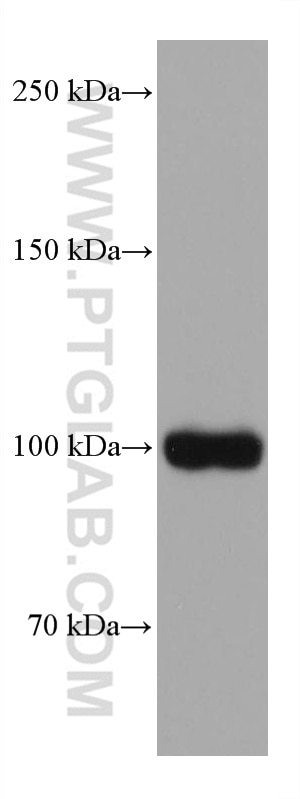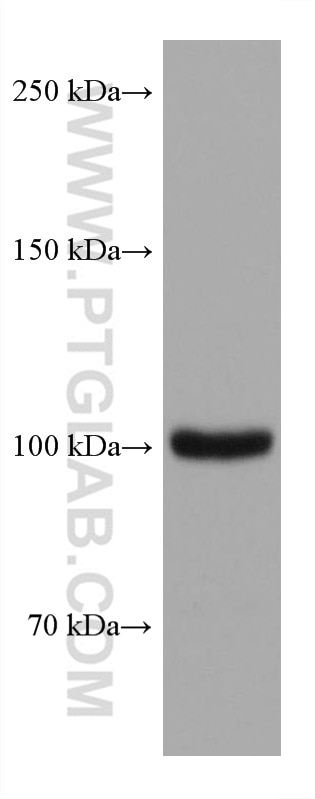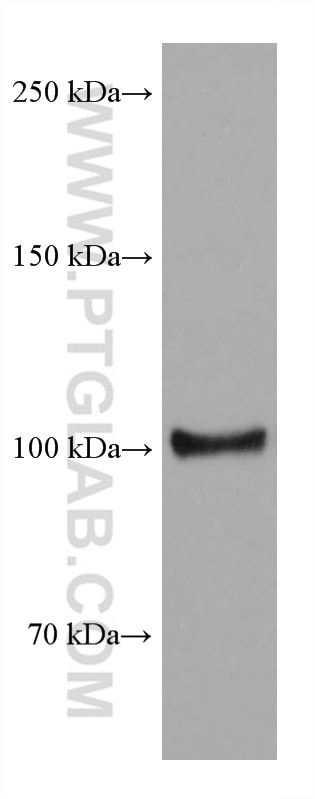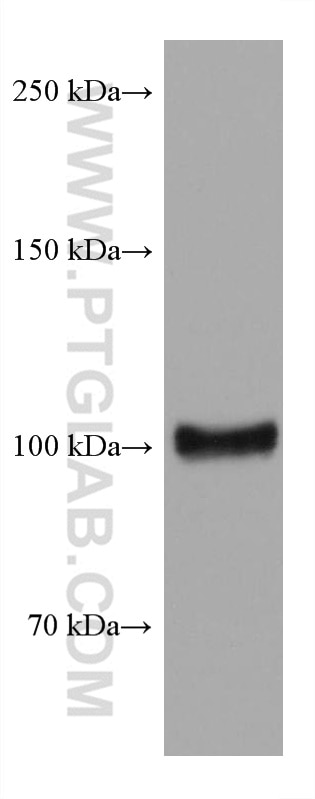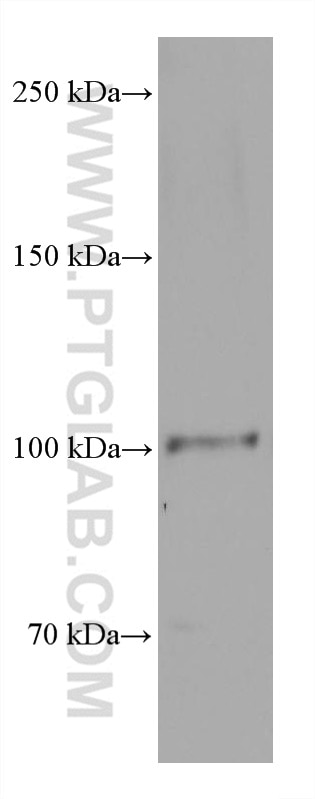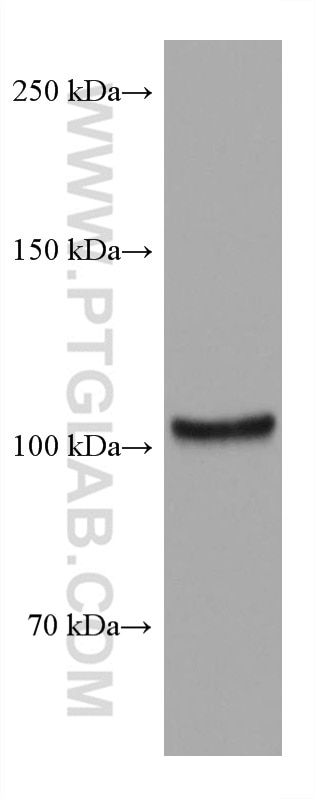TRPV1 Monoklonaler Antikörper
TRPV1 Monoklonal Antikörper für WB, ELISA
Wirt / Isotyp
Maus / IgG1
Getestete Reaktivität
human
Anwendung
WB, CoIP, ELISA
Konjugation
Unkonjugiert
CloneNo.
1A3C9
Kat-Nr. : 66983-1-Ig
Synonyme
Geprüfte Anwendungen
| Erfolgreiche Detektion in WB | HepG2-Zellen, HEK-293-Zellen, HUVEC-Zellen, MDA-MB-468-Zellen, T-47D-Zellen, Y79-Zellen |
Empfohlene Verdünnung
| Anwendung | Verdünnung |
|---|---|
| Western Blot (WB) | WB : 1:1000-1:6000 |
| It is recommended that this reagent should be titrated in each testing system to obtain optimal results. | |
| Sample-dependent, check data in validation data gallery | |
Veröffentlichte Anwendungen
| KD/KO | See 1 publications below |
| WB | See 36 publications below |
| CoIP | See 1 publications below |
Produktinformation
66983-1-Ig bindet in WB, CoIP, ELISA TRPV1 und zeigt Reaktivität mit human
| Getestete Reaktivität | human |
| In Publikationen genannte Reaktivität | human |
| Wirt / Isotyp | Maus / IgG1 |
| Klonalität | Monoklonal |
| Typ | Antikörper |
| Immunogen | TRPV1 fusion protein Ag18683 |
| Vollständiger Name | transient receptor potential cation channel, subfamily V, member 1 |
| Berechnetes Molekulargewicht | 839 aa, 95 kDa |
| Beobachtetes Molekulargewicht | 105 kDa |
| GenBank-Zugangsnummer | BC132820 |
| Gene symbol | TRPV1 |
| Gene ID (NCBI) | 7442 |
| Konjugation | Unkonjugiert |
| Form | Liquid |
| Reinigungsmethode | Protein-G-Reinigung |
| Lagerungspuffer | PBS with 0.02% sodium azide and 50% glycerol |
| Lagerungsbedingungen | Bei -20°C lagern. Nach dem Versand ein Jahr lang stabil Aliquotieren ist bei -20oC Lagerung nicht notwendig. 20ul Größen enthalten 0,1% BSA. |
Hintergrundinformationen
TRPV1, also named as VR1 or OTRPC1, belongs to the transient receptor potential (TRP) family and TRPV subfamily (PMID: 17579562). TRPV1 is a ligand-activated non-selective calcium permeant cation channel expressed predominantly by sensory neurons (PMID: 10821274). It is involved in detection of noxious chemical and thermal stimuli. TRPV1 plays an important role in inflammatory thermal hyperalgesia (PMID: 10764638; 10821274).
Protokolle
| PRODUKTSPEZIFISCHE PROTOKOLLE | |
|---|---|
| WB protocol for TRPV1 antibody 66983-1-Ig | Protokoll herunterladen |
| STANDARD-PROTOKOLLE | |
|---|---|
| Klicken Sie hier, um unsere Standardprotokolle anzuzeigen |
Publikationen
| Species | Application | Title |
|---|---|---|
Proc Natl Acad Sci U S A Sleep deficiency exacerbates periodontal inflammation via trigeminal TRPV1 neurons | ||
Phytomedicine Yu-Xue-Bi capsule ameliorates aggressive synovitis and joint damage in rheumatoid arthritis via modulating the SUCNR1/HIF-1α/TRPV1 axis | ||
Int J Mol Sci The Contribution of TSLP Activation to Hyperalgesia in Dorsal Root Ganglia Neurons of a Rat. | ||
Biochim Biophys Acta Mol Basis Dis Palmitic acid and trans-4-hydroxy-3-methoxycinnamate, the active ingredients of Yaobishu formula, reduce inflammation and pain by regulating gut microbiota and metabolic changes after lumbar disc herniation to activate autophagy and the Wnt/β-catenin pathway | ||
EBioMedicine Single cell RNA-seq analysis identifies ferroptotic chondrocyte cluster and reveals TRPV1 as an anti-ferroptotic target in osteoarthritis | ||
Int J Mol Sci Luteolin Alleviates Oxidative Stress in Chronic Obstructive Pulmonary Disease Induced by Cigarette Smoke via Modulation of the TRPV1 and CYP2A13/NRF2 Signaling Pathways |
Rezensionen
The reviews below have been submitted by verified Proteintech customers who received an incentive for providing their feedback.
FH Shihab (Verified Customer) (09-17-2021) | This antibody was tried in a cell type (cannot disclose) which has previously been shown to express plenty of TRPV1 signal. However, this antibody was unable to give any signal in various attempts at staining, even at 1:100 dilution. This is not to say that this anybody is not good because I have had trouble with various TRPV1 antibodies in this tissue type but it will be used in other cell/tissue type to see its staining capabilities
|
